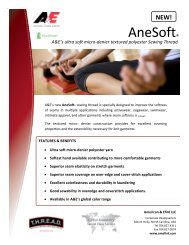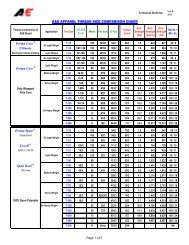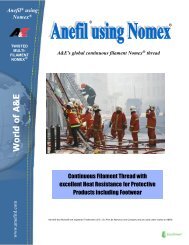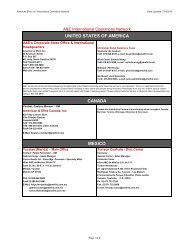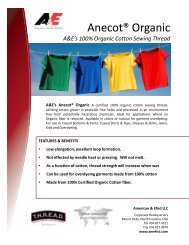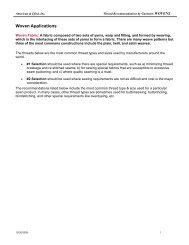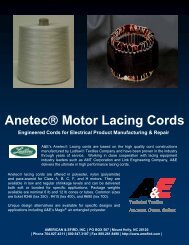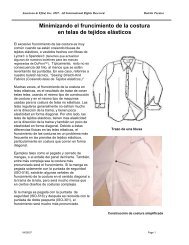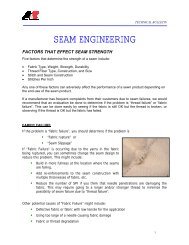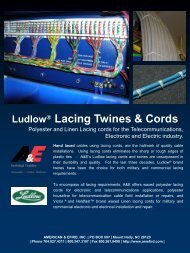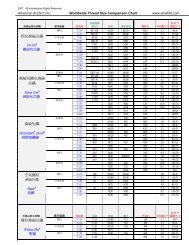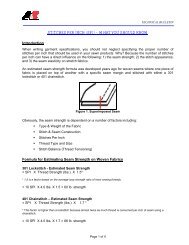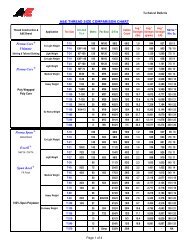Minimizing Seam Puckering on Stretch Woven Fabrics
Minimizing Seam Puckering on Stretch Woven Fabrics
Minimizing Seam Puckering on Stretch Woven Fabrics
- TAGS
- minimizing
- seam
- puckering
- woven
- fabrics
Create successful ePaper yourself
Turn your PDF publications into a flip-book with our unique Google optimized e-Paper software.
TECHNICAL BULLETINSuggesti<strong>on</strong>sFactories that are familiar with sewing n<strong>on</strong>-stretch fabrics who are now sewing stretch-wovenfabrics must change their paradigm about how to sew pucker-free seams. Many designershave realized that they must look at sewing stretch-wovens with the same thought process usedin sewing knits. Below are comments and suggesti<strong>on</strong>s that we have found will help to minimizeyour seam puckering <strong>on</strong> stretch-woven garments.• Use sewing machines with differential feedAll machines designed for knits are equipped with differential feed where the sewingmachine has two feed dogs that are independently adjusted. In most cases, the fr<strong>on</strong>tfeed is adjusted to feed in more fabric than the back feed is feeding out of the sewingmachine. This gathering acti<strong>on</strong> helps put the fabric back to its original n<strong>on</strong>-stretched orpucker-free state.On the other hand, most sewing machines designed for wovens are plain feed machineshaving <strong>on</strong>ly <strong>on</strong>e feed. An excepti<strong>on</strong> to this would be safetystitch and overedgemachines that many times have differential feed but the differential is adjusted for n<strong>on</strong>stretchwoven fabrics instead of for stretch woven fabrics.Therefore, if possible, sew stretch wovens with sewing machines equipped withdifferential feed.• Simplify the seam c<strong>on</strong>structi<strong>on</strong>As menti<strong>on</strong>ed earlier, simplify your seam c<strong>on</strong>structi<strong>on</strong> particularly <strong>on</strong> seams that aresewn <strong>on</strong> the bias. If you must stitch and re-stitch seams, then use a sewing machinewith differential feed <strong>on</strong> the first operati<strong>on</strong> and make sure the differential feed is adjustedproperly for the fabric. When single needle topstitching the previously sewn seam, useminimum presser foot pressure and observe sewing operator handling to make sure theyare guiding the fabric into the machine and not stretching the seam as it is being sewn.• Have the fabric checked for excessive shrinkageSometimes stretch-woven fabrics can have a higher shrinkage than regular n<strong>on</strong>-stretchfabrics and this shrinkage can greatly c<strong>on</strong>tribute to excessive seam puckering. Most ofthe puckering will appear when the garment is run through the finishing processes in thefactory, or can appear after the garment is home laundered.For other causes of seam puckering and how to resolve these see our “<str<strong>on</strong>g>Minimizing</str<strong>on</strong>g> <str<strong>on</strong>g>Seam</str<strong>on</strong>g><str<strong>on</strong>g>Puckering</str<strong>on</strong>g>” bulletin.If you need additi<strong>on</strong>al assistance, c<strong>on</strong>tact your local A&E Sales or GRS representative or ourTechnical Soluti<strong>on</strong>s Team.Page 3



